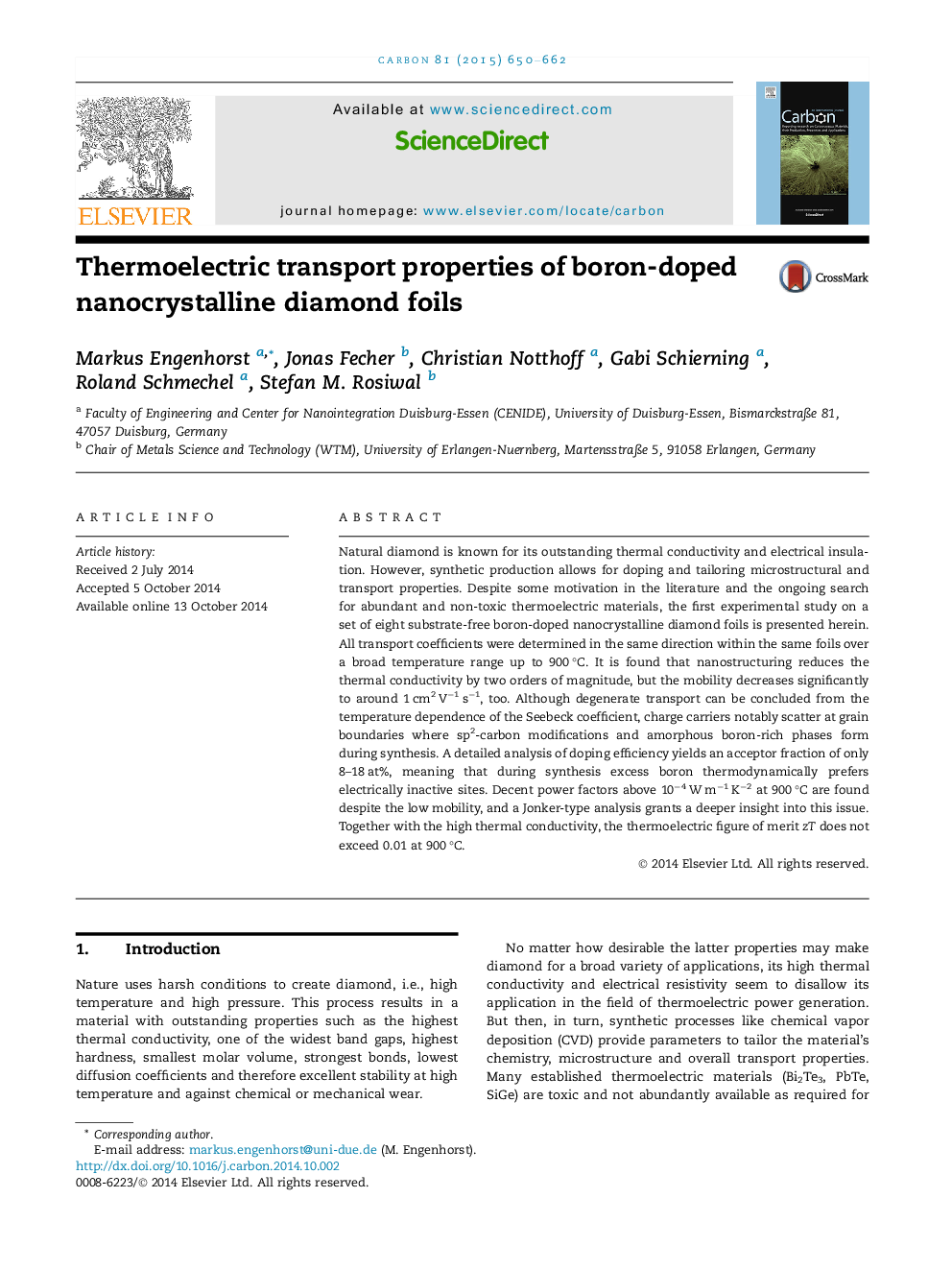| Article ID | Journal | Published Year | Pages | File Type |
|---|---|---|---|---|
| 7852377 | Carbon | 2015 | 13 Pages |
Abstract
Natural diamond is known for its outstanding thermal conductivity and electrical insulation. However, synthetic production allows for doping and tailoring microstructural and transport properties. Despite some motivation in the literature and the ongoing search for abundant and non-toxic thermoelectric materials, the first experimental study on a set of eight substrate-free boron-doped nanocrystalline diamond foils is presented herein. All transport coefficients were determined in the same direction within the same foils over a broad temperature range up to 900 °C. It is found that nanostructuring reduces the thermal conductivity by two orders of magnitude, but the mobility decreases significantly to around 1 cm2 Vâ1 sâ1, too. Although degenerate transport can be concluded from the temperature dependence of the Seebeck coefficient, charge carriers notably scatter at grain boundaries where sp2-carbon modifications and amorphous boron-rich phases form during synthesis. A detailed analysis of doping efficiency yields an acceptor fraction of only 8-18 at%, meaning that during synthesis excess boron thermodynamically prefers electrically inactive sites. Decent power factors above 10â4 W mâ1 Kâ2 at 900 °C are found despite the low mobility, and a Jonker-type analysis grants a deeper insight into this issue. Together with the high thermal conductivity, the thermoelectric figure of merit zT does not exceed 0.01 at 900 °C.
Related Topics
Physical Sciences and Engineering
Energy
Energy (General)
Authors
Markus Engenhorst, Jonas Fecher, Christian Notthoff, Gabi Schierning, Roland Schmechel, Stefan M. Rosiwal,
